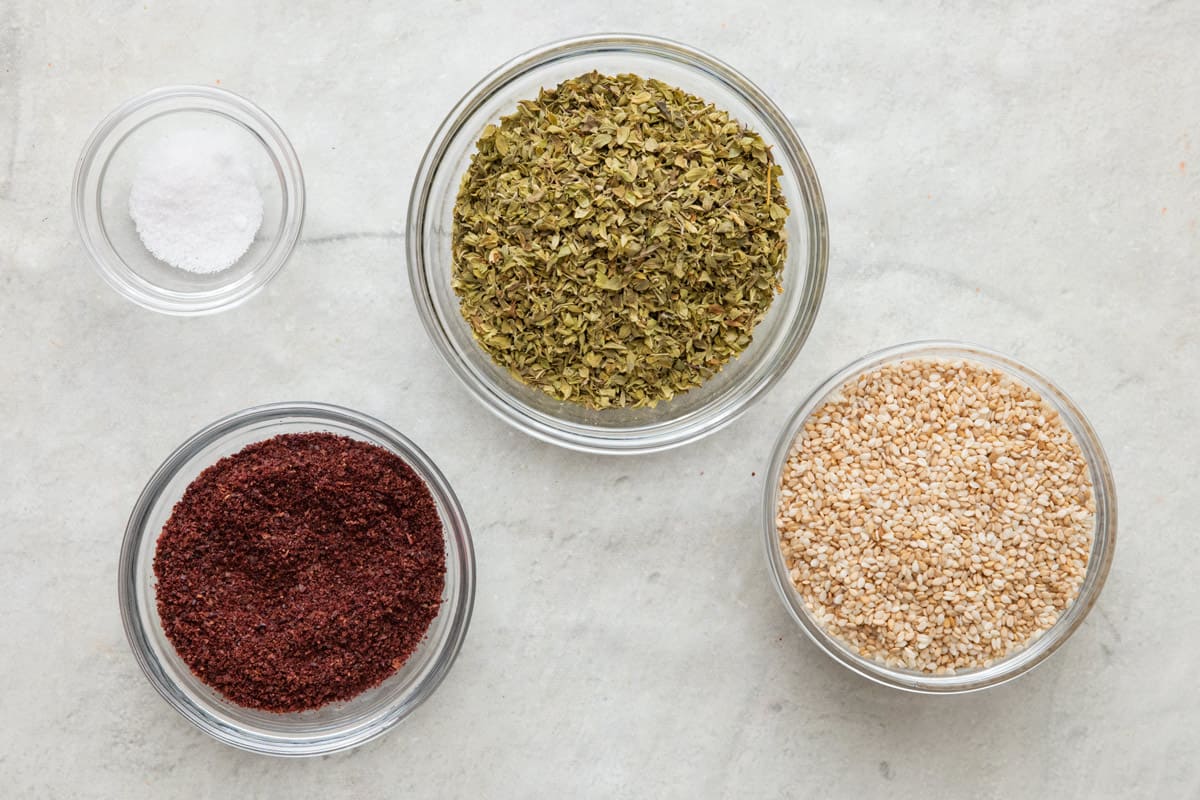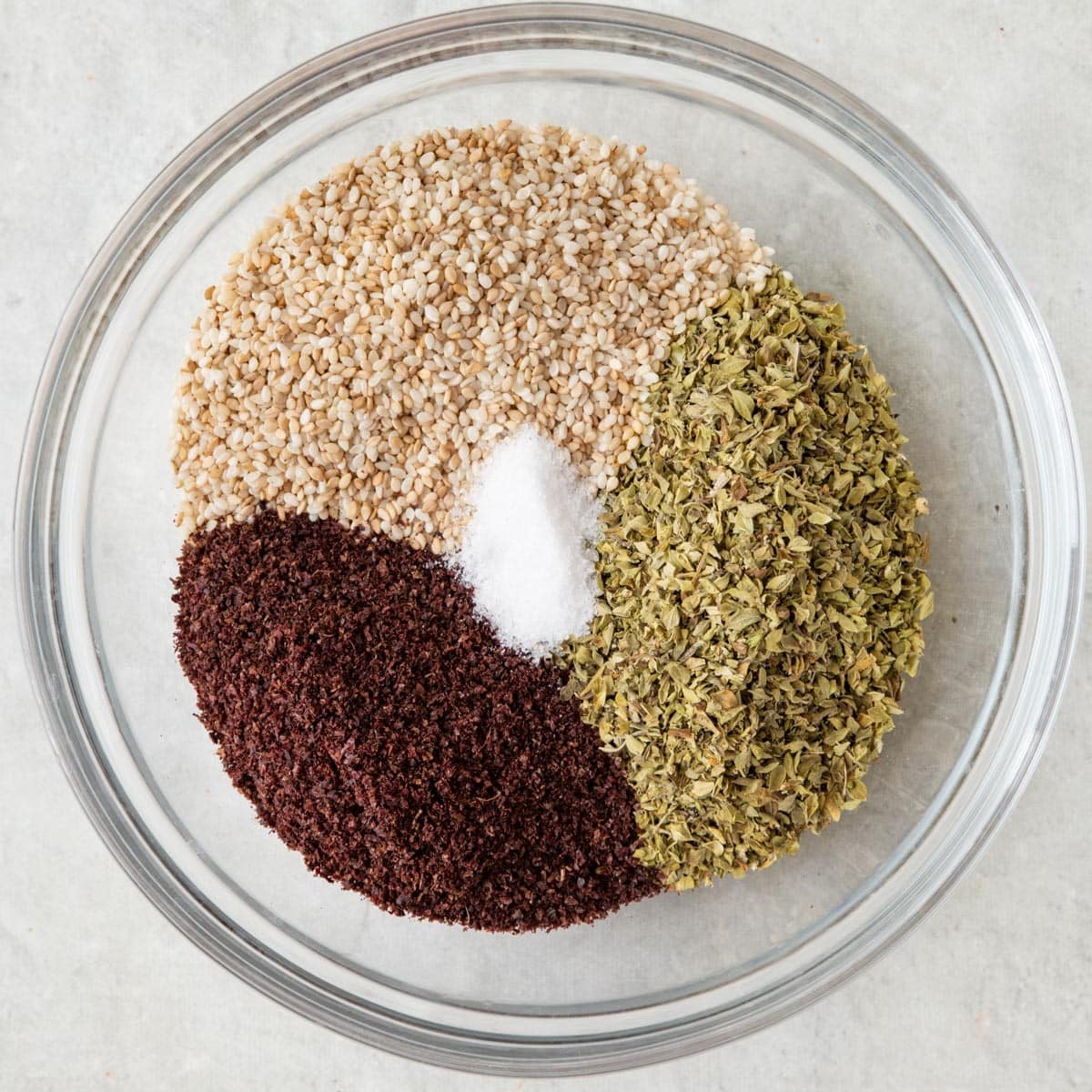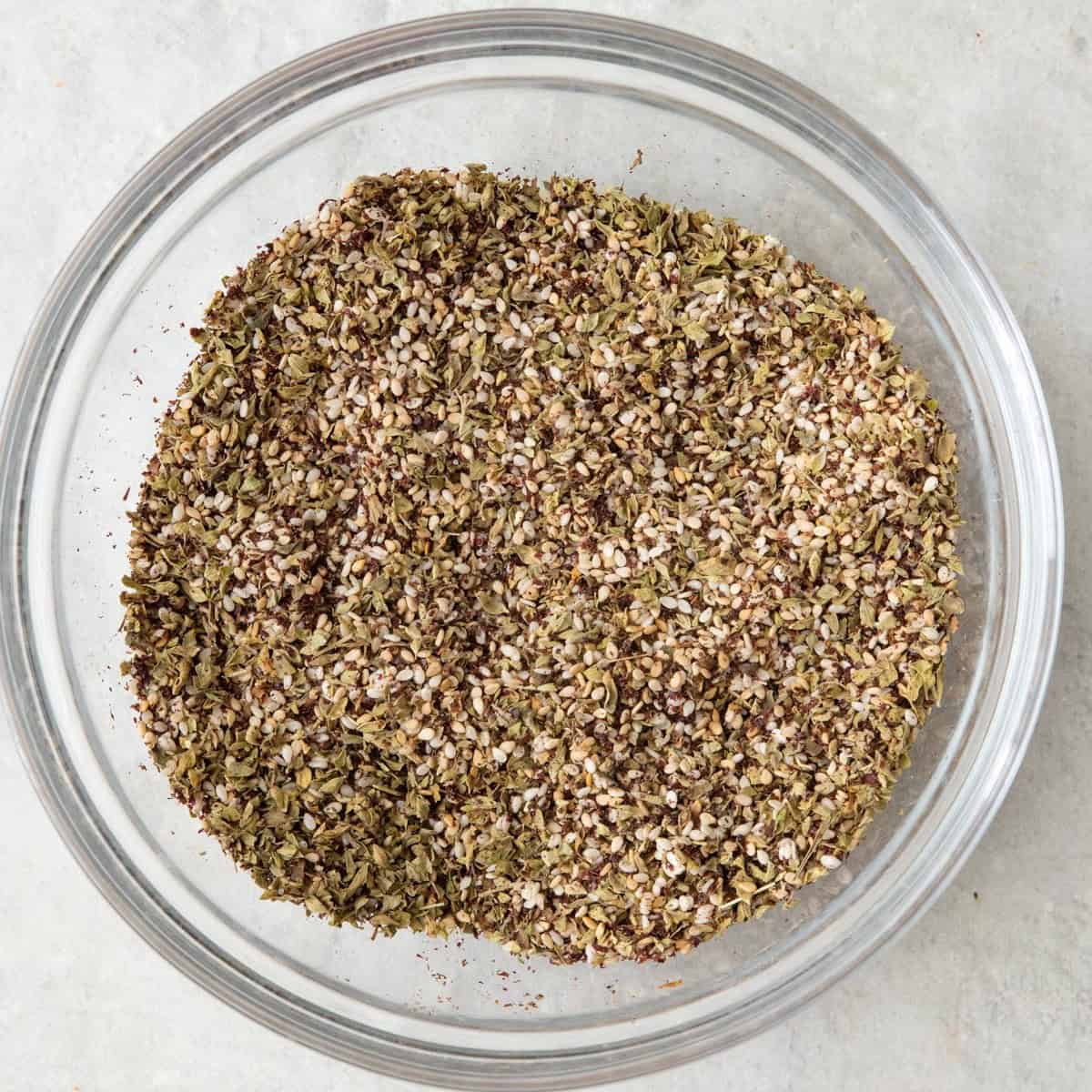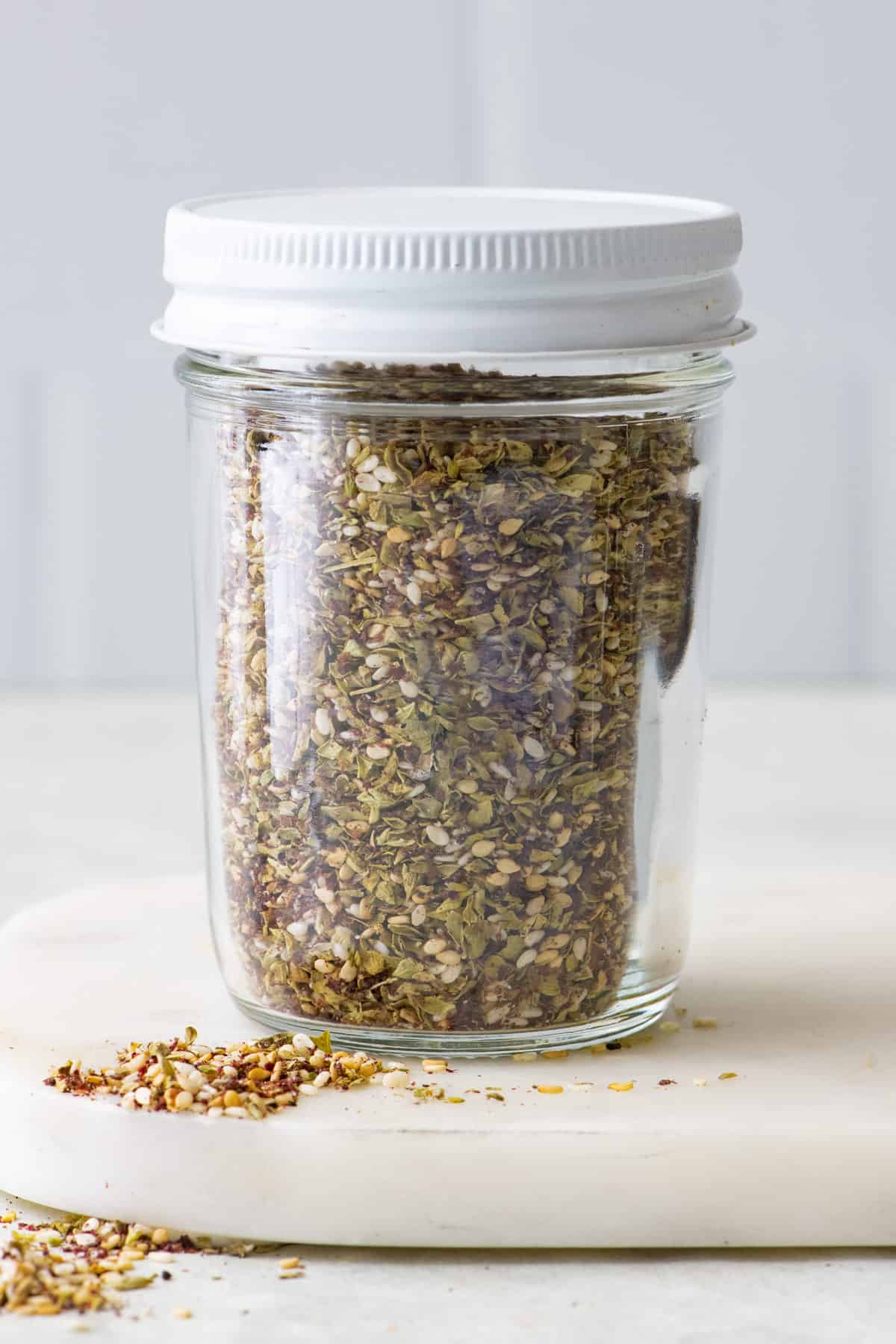Homemade Za’atar Spice
Updated Aug 14, 2025
Homemade Za'atar is easy to make at home with just 4 spices: oregano, sumac, salt, and toasted sesame seeds.
This post may contain affiliate links. Please read our disclosure policy.

Jump to Section
Za’atar is one of my favorite spices!

Za’atar is one of those spices that I grew up with; my family always had a jar in the kitchen. It’s a simple blend of dried thyme, sesame seeds, sumac, and salt, but when it’s fresh, the flavor is completely different from anything you can buy pre-packaged.
I started making za’atar at home so I could tweak it to my own taste, sometimes more sumac for tang, sometimes extra sesame for nuttiness. It only takes a few minutes to mix up, and I use it on everything from roasted vegetables to labneh to grilled chicken.
Happy Cooking!
– Yumna
Za’atar Spice Ingredients

- Dried oregano: Look for a Mediterranean one, or if possible, one made in Lebanon like this one.
- Sumac: Similar to the dried oregano, I suggest using a Lebanese-made sumac like this one. You’ll get a more authentic flavor, will will taste more like the za-atar you may have had before. While it won’t be exactly the same, dried lemon zest could be swapped for sumac.
- Toasted sesame seeds: You can toast your own sesame seeds or buy them pre-toasted. Use poppy seeds if you don’t have any sesame, or have an allergy.
- Salt: Use fine sea salt.
How to Make Za’atar Spice



Za’atar Recipe
Ingredients
- ½ cup dried wild oregano leaves
- ⅔ cup toasted sesame seeds
- ¼ cup sumac
- ½ teaspoon fine sea salt
Instructions
- In a small bowl mix all ingredients together until well combined. Store in an airtight container for up to one month.
Notes
Nutrition
Nutrition information provided is an estimate. It will vary based on cooking method and specific ingredients used.
Tutorial Tips
- Use fresh spices. Fresh spices will deliver the best flavor and higher potency, so it’s worth starting with fairly new jars.
- Make a smaller batch. If you just want to try out the spice blend but are unsure if you want to commit to this size batch that makes about 1 ½ cups of za’atar (12 ounces), you can half or reduce the recipe. This would be ¼ cup oregano, ⅓ cup toasted sesame seeds, ⅛ cup sumac, and ¼ teaspoon of fine sea salt.
- Customize it to your taste. Some people include dried marjoram or even dried thyme. You can start with ½ tablespoon of each and adjust to your taste.
- Experiment with ratios. Play around with the amount of each ingredient to create a blend that suits your taste buds.
Recipes to Make with Za’atar Spice
- Zaatar Manakeesh
- Zaatar Spring Rolls
- Grilled Halloumi Cheese
- Homemade Labneh
- Lentil Salad
- Baked Za’atar Chicken
- Pomegranate Roasted Chicken Thighs






